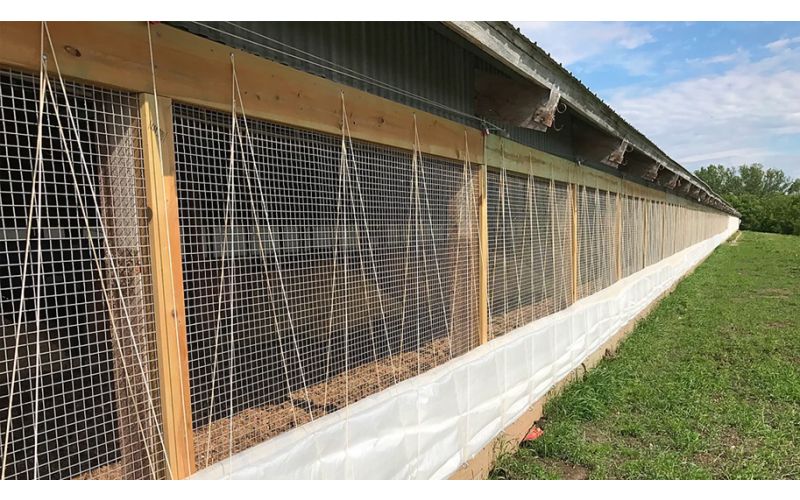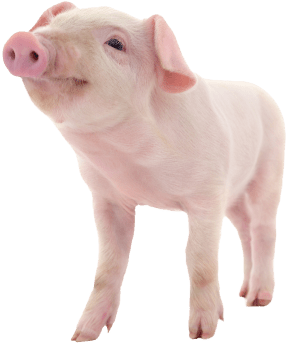
Maximizing Livestock Comfort: The Role of Barn Curtains
|
|
Time to read 4 min
 You are being redirected to QC Supply Pharmacy, where you’ll find a wide selection of high-quality prescription and pharmaceutical products for animals of all sizes.
Enjoy the same great service and expertise you trust from QC Supply.
Click below to continue shopping.
Continue
No thanks, stay on the main site
Powered by
You are being redirected to QC Supply Pharmacy, where you’ll find a wide selection of high-quality prescription and pharmaceutical products for animals of all sizes.
Enjoy the same great service and expertise you trust from QC Supply.
Click below to continue shopping.
Continue
No thanks, stay on the main site
Powered by


|
|
Time to read 4 min
Your barn is home to your livestock, and your livestock are central to your livelihood. Whether you are considering upgrades to your facility or trying to maximize livestock productivity, it’s important not to overlook the importance of light, ventilation, and overall climate control. Better environmental conditions can lead to better yield, which means increased profits. Animals reared in poorly lit and poorly ventilated facilities are less productive and prone to a myriad of diseases. Investing in a high-quality agricultural curtain system for your facility may make a lot of sense.
There are many benefits associated with the use of barn curtains in agricultural buildings. Barn curtains give you a high degree of ventilation solutions , insulation , and lighting control when compared with rigid siding materials like wood or metal. Depending on the time of year, barn curtains provide cooling or warmth. They are excellent tools for managing dust, methane and ammonia, moisture and mold, and airborne diseases, all of which can represent respiratory health risks to your livestock, particularly in young animals. In summer, barn ventilation solutions mitigate reliance on fans and expensive HVAC systems because they can open side and end walls, allowing natural air to circulate through the facility.
Another important advantage of livestock curtain systems is barn light control . It is a well-established fact that animal production is linked to daylight. Barn curtain systems are available in various colors and thicknesses, all of which provide the producer with more control over when and how much light enters a facility. When combined with traditional overhead lighting, this sort of control can be exploited to manipulate livestock production to a producer’s advantage, particularly in dairy and poultry facilities.
Barn curtain systems typically work in roll-up barn curtains or drop-down barn curtains configurations, and are powered by motors or moved manually with the use of hand crank. Some systems offer the producer both roll-up and drop-down options. Each system has its advantages. Drop-down systems are particularly useful around young animals unaccustomed to drafts. Air enters the barn through the top of the wall rather than near the floor, mixing fresh air with warm air trapped at the roof, providing ventilation without exposing animals to the shock of sudden temperature changes. Widely used in freestall barns, roll-up curtains provide a sudden and significant increase of fresh air at floor-level that can quickly cool hot environments.
Weather is always changing and a farmer can’t be at the beck and call of his barn curtains, adjusting them through the day. Most suppliers offer automation for their curtain systems in the form or thermostatic controls. Barn curtain automation frees the farmer to attend to other important tasks, knowing that his livestock are comfortable at the temperature he desires.
IIt makes sense to take full advantage of any advancements in livestock climate control , and there’s little reason to be hand-cranking barn curtains up and down when the technology exists to do it for you. Rain and temperature sensors are available and can be useful tools for controlling barn ventilation if, for example, only one side of a facility is getting wind-blown rain or too much direct sun. Automated barn curtains do introduce the need to perform periodic motor maintenance, but the inconvenience of any regular maintenance is outweighed by the benefits a barn curtain system provides.
Barn curtain quality is a central consideration. Generally speaking, you get what you pay for. While your upfront costs might be lower with a more affordable (cheaper) material, in the long run it may be a wiser choice to purchase quality material. Cheaper material will break down more quickly and necessitate an earlier replacement (with replacement costs) than will a higher quality curtain. Any down time is an interruption to your operation and is a potential hit to your bottom line.
Since the barn curtain material is effectively a wall, minor rips and tears reduce their effectiveness. Ripped barn curtains allow unwanted cold or heat into the facility. Well-constructed barn curtain materials will last longer and provide the producer with a more consistent and controlled environment for livestock.
Barn curtain systems come in a variety of weights, colors, and insulations. Some barn curtain materials are also flame-resistant. Since different areas of the country experience different weather patterns, it makes sense to research the materials available and think through their potential effectiveness for your location and your livestock needs.
Breathable barn curtains sound great. In summer, it’s often desirable to have breathable clothes. With respect to barn curtain systems , however, being breathable is not necessarily a good thing. Breathable barn curtains do allow more air to pass through them than non-breathable barn curtains , but that also means the producer has less control over barn ventilation solutions .
Similarly, barn curtain color options are also important. Blackout barn curtains allow the least amount of light into the barn. This can be critical as many livestock—poultry in particular—are sensitive to light, and controlling barn light can be important for managing productivity. Here again, barn curtain quality is important—cheap blackout barn curtains may not be as effective as premium material, letting in more light than you want (and paid for).
On the other hand, translucent barn curtains allow for maximum light, which can be useful for lowering energy costs. Again, do the research needed before making a purchase.
As mentioned, a high-quality barn curtain system will last longer and save you money in repair and new installation/repair costs. In addition to saving money, you’ll also be providing your livestock with more protection for a longer period. And that’s the whole idea. Using high-quality barn curtains means less disruption to your stock and their habits, which means happier animals and a better yield for the producer.
Does your facility use a barn curtain system ? Tell us about your experience in the comments section!